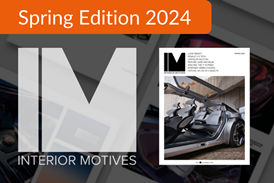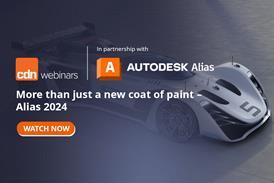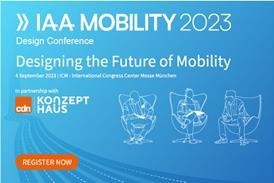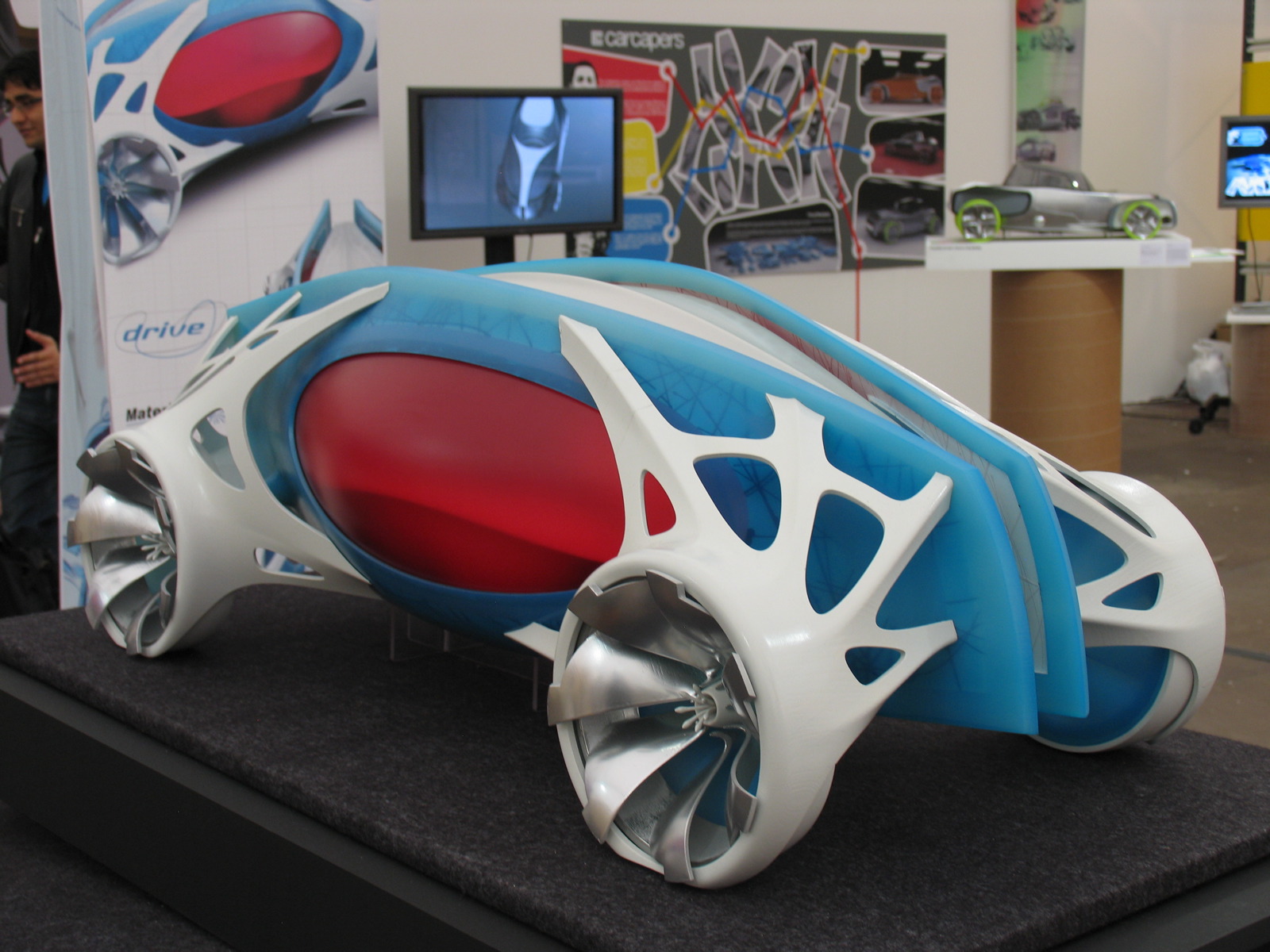
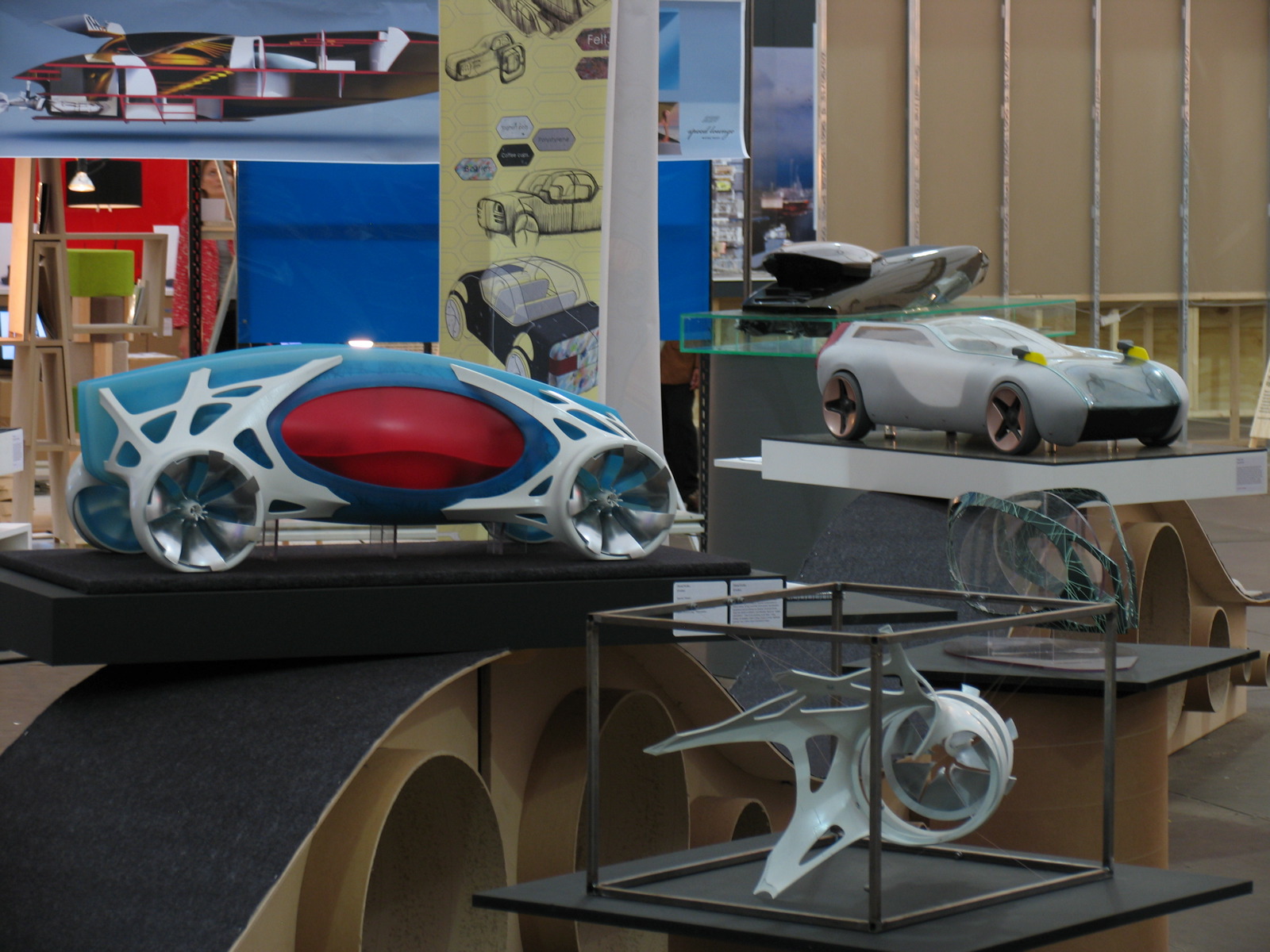
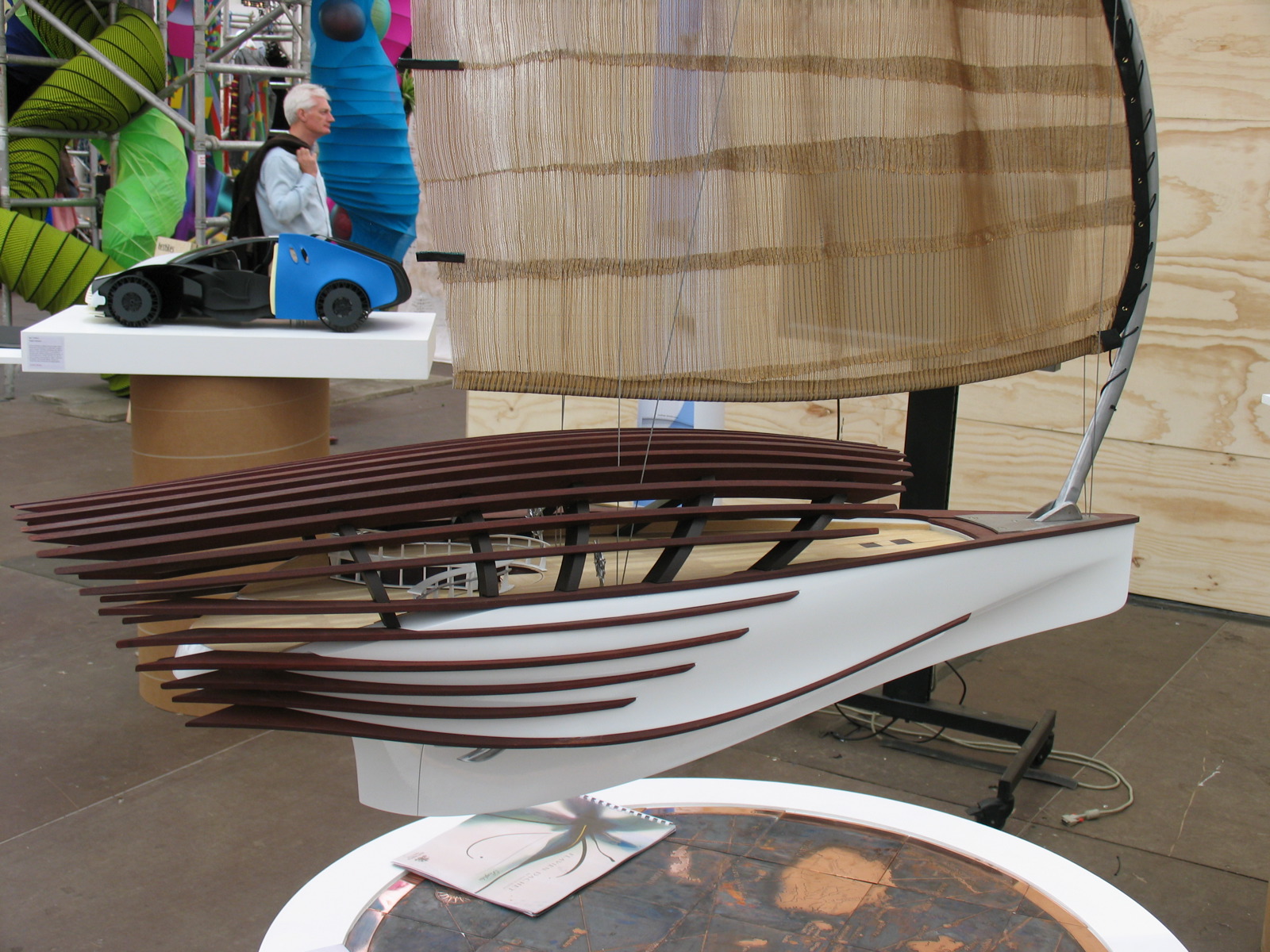



Taking design far into the future was Daniel Kafka's 'Everlast', a car that acts as a mobile repository of its family user's shared history and fosters itself an irreplaceable part of the household. The concept proposes a fully autonomous multi-generational vehicle instead of a disposable or recyclable one, allowing for indefinite extended usefulness that is optimally environmentally friendly. Kafka explained how he used what he describes as the 'teddy bear factor', a term for sentimentalism between user and object. Passengers within the vehicle are exposed to a sensory experience that includes abstract projections of friends and family on the wall cavities.
The overall design, set for the year 2050, takes its inspiration from a bird's skull. "The cabin is the brain, where the sensory experiences take place," said Kafka. "The chassis, the major structure, is the bone (incorporating extensive use of aluminum and a solar panel) and the muscular parts are the steering parts. It's about organic essentialism, what isn't necessary is not there." Kafka also proposes a photosynthetic power source within the main structure, while the car's lack of shutlines suggests users would enter the cabin through membranes that would then 'reheal'.
Moving away from four-wheeled land-based vehicles, Flavien Dachet presented an environmentally-orientated project specifically devised for use in the South Pacific. The 'Kioa' is a mobile hotel for eco-tourists touring around the Fiji islands, but can also be used by local inhabitants as a means of transport within the small island communities. Made from locally grown timber, the deck would be used to ferry local passengers and goods, whilst below deck are cabins for up to eight eco-tourists. There are windows beneath the vessel to allow those aboard to view the ocean life below.
"It is a collaboration of efforts," French native Dachet said. "Nissan sponsored the model, a student from the textile design program at RCA helped to assemble the textiles and colors, and a student on the jewelry design course helped me create the map below it."
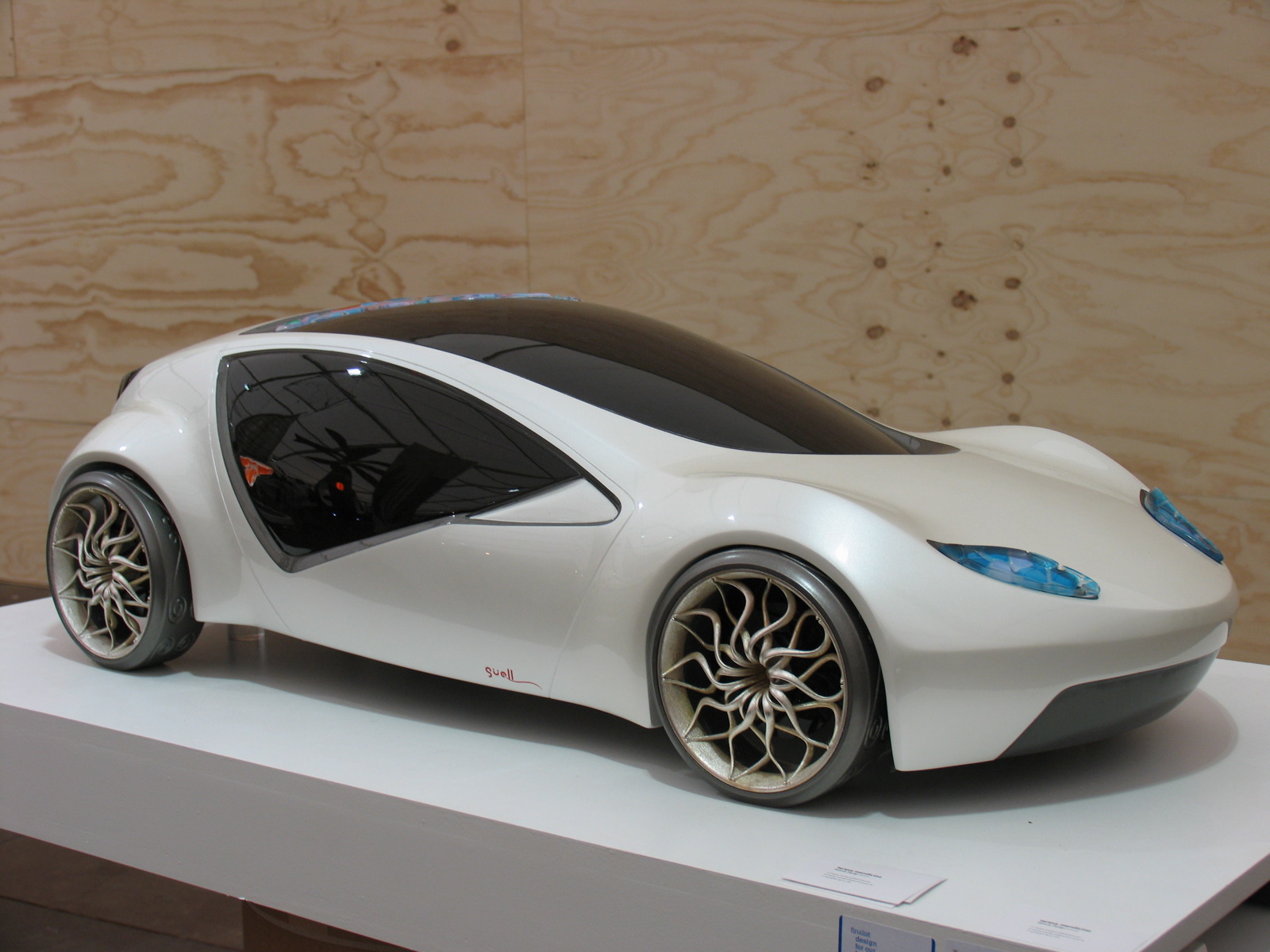
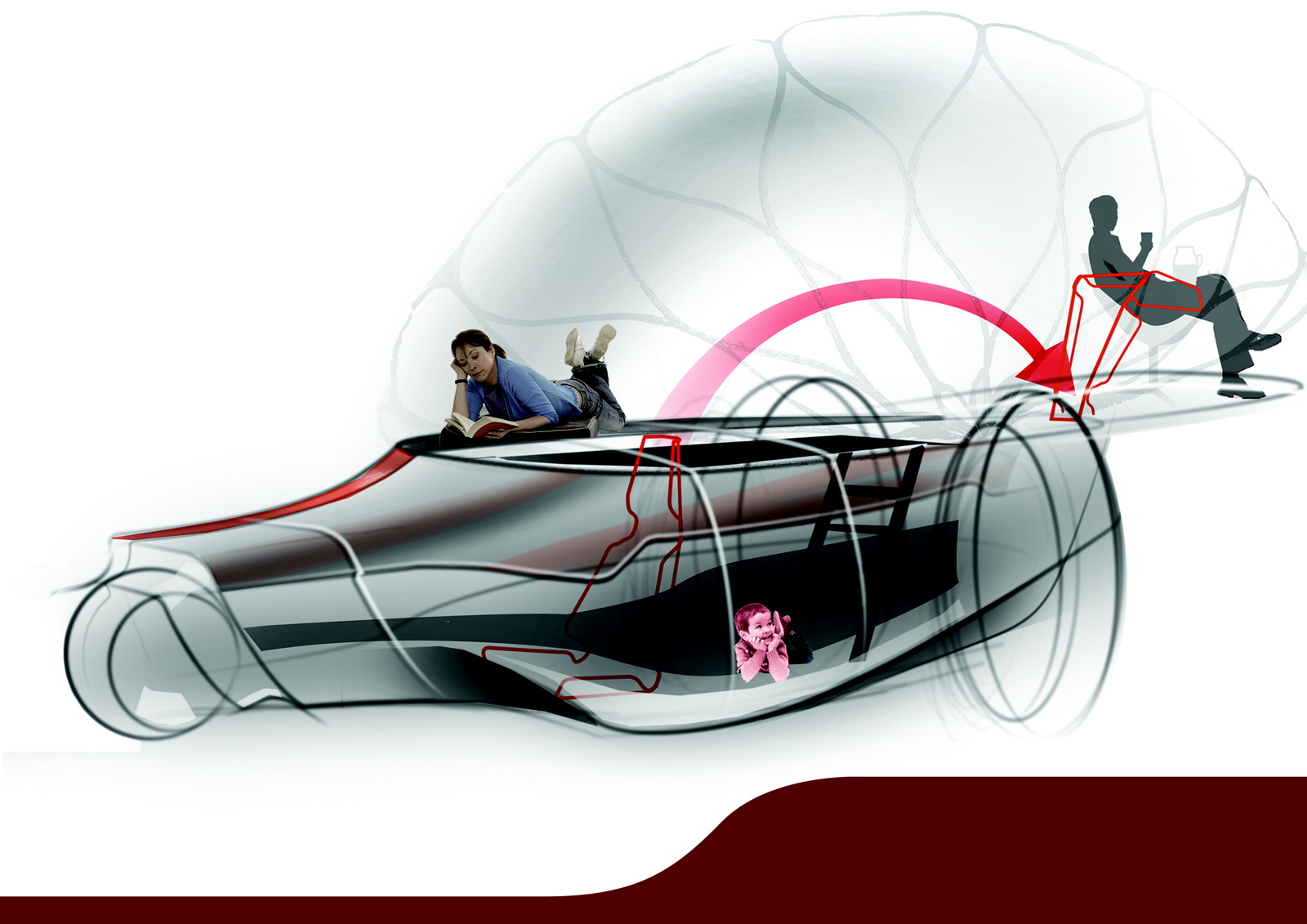
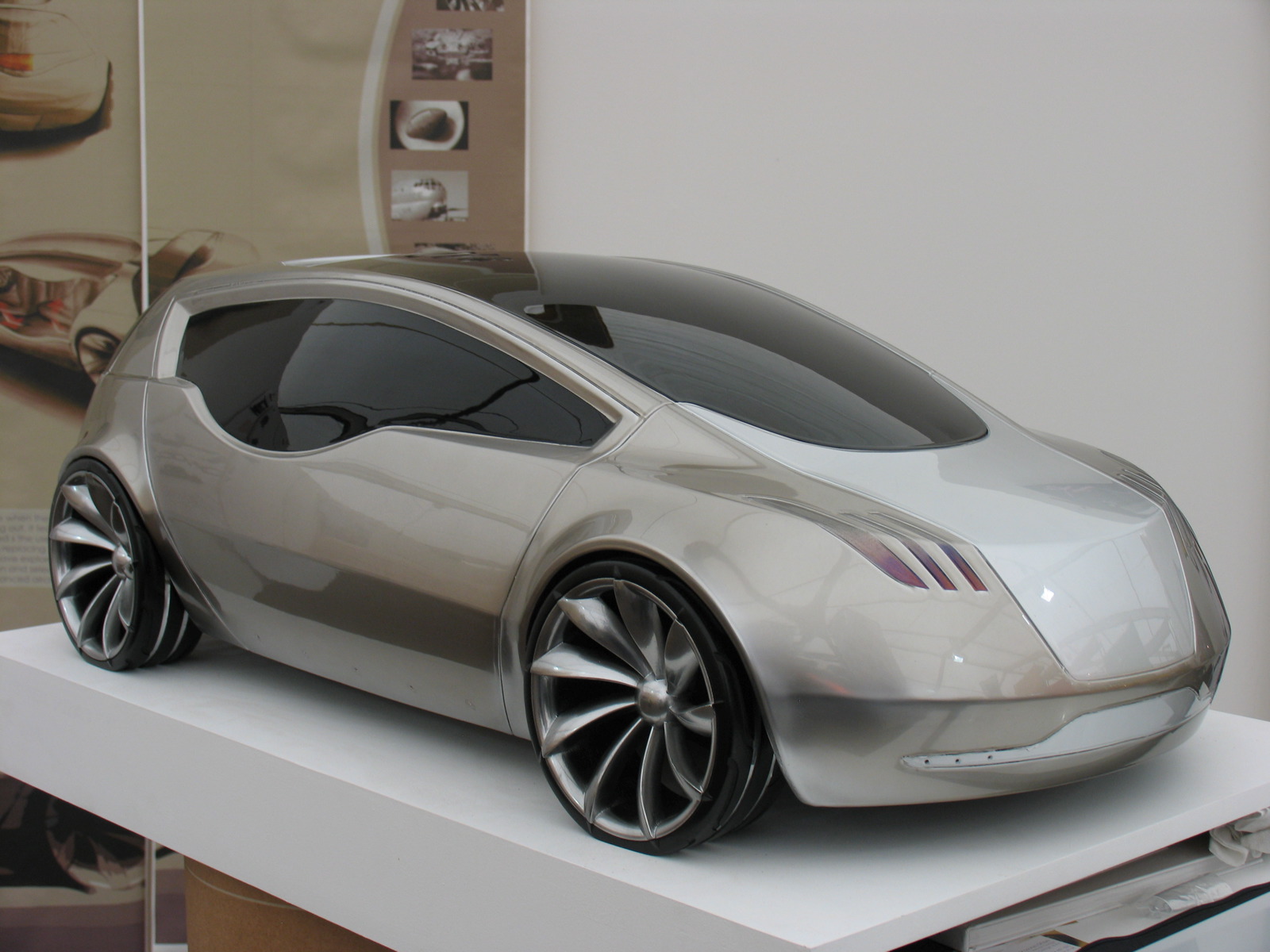
Teresa Mendicino had several design properties on display: an exterior clay model, a full-size instrument panel with back-lit laser cut patterned wood veneer, a full-size corset inspired seat, and an alternative macrama-style wool seat cover. The silver-plated wheels and glass mosaic lights were other details that added to a body of work centered on 'wellness'.
"The whole idea is that in nature and as much for human beings, nothing is symmetrical," said Mendecino. Her goal was to create a car that would transform trips into more enjoyable experiences and cater to the different needs of the driver and passenger. "I gave the driver more windscreen space and a higher seating position, and put a mosaic above the passenger compartment to have a different refraction through the natural light filtering through. I was really interested in transforming everything into structure so that it could always be different, and the same for the interior: I wanted to have different kinds of covers and different settings to choose which color to have displayed in the car, and the lights can be personalized for different functions to suit your own themes."
Influenced by the landscape in his native Iran, Ehsan Moghaddampour created 'Bugiman', a modern off-road concept that is a far cry from the clumsy, modern day 4X4. Intended as a vehicle for the year 2030 - when Moghaddampour fears the attraction of driving will be lost to computer control - the project seeks to maximize the adventure quotient of driving and acknowledges the needs of those in desert climes, effectively creating a car with entertaining driving characteristics over various terrain. The car is optimized to run on sand dunes, with tires that feature 'cups' to provide traction and a system that regulates ride height. The interior is made from latex and features a steering wheel that can be used as reigns to guide the vehicle through jumps or slides through the desert. The canopy (which lifts off to provide access to the interior) features a set of cutouts to strengthen the overall structure of the large glass DLO.
Ana Zadnik drew from her own personal experience to create the 'Urban Camper', a three-wheeled city car that can be transformed into a multi-level small home complete with a chemical toilet, a stovetop, and seats that double as a small desk for laptop computers. The roof features a canopy that can be raised to create ample living space.
"In the past two decades there has been a huge increase in neo-nomadic lifestyles," said Zadnik. "There are a lot of people that have changed their living spaces because of their jobs, and I was one of those people. As a student it was very difficult to find affordable accommodation in urban areas. This car is the size of a Volkswagen Passat but can expand into a small house, so you can incorporate aspects that are important in everyday life."
Vinnie Desai's 'Adaptive Customization' project caters to families during different phases of their lives: from the time they have a child onto the child growing up and finally moving out. Definitely one of the most conventional looking projects on display, the family car features an adaptive interior which can be changed or reconfigured as the user's lifestyle changes, eliminating the need to continually replace a vehicle once users have outgrown it. The exterior is about longevity, with the styling, construction, and selection of materials (and functional aspects) inspired by advanced aircrafts for overall durability.
One of the most impressive shows for several years with a broader spectrum of project than ever before, the RCA Vehicle Design course is nearly 40 years old, with the first students having graduated in 1969. Peter Stevens, Ian Callum and Peter Schreyer all graduated from the RCA, and nearly 98 per cent of RCA graduates find work within the automotive industry. A number of these students will certainly follow in their footsteps, blazing a new direction for automotive design.
The Great Exhibition continues until June 29th in Kensington Gardens, London.
Royal College of Art website: www.rca.ac.uk
Related Stories:
Royal College of Art Show 2006

